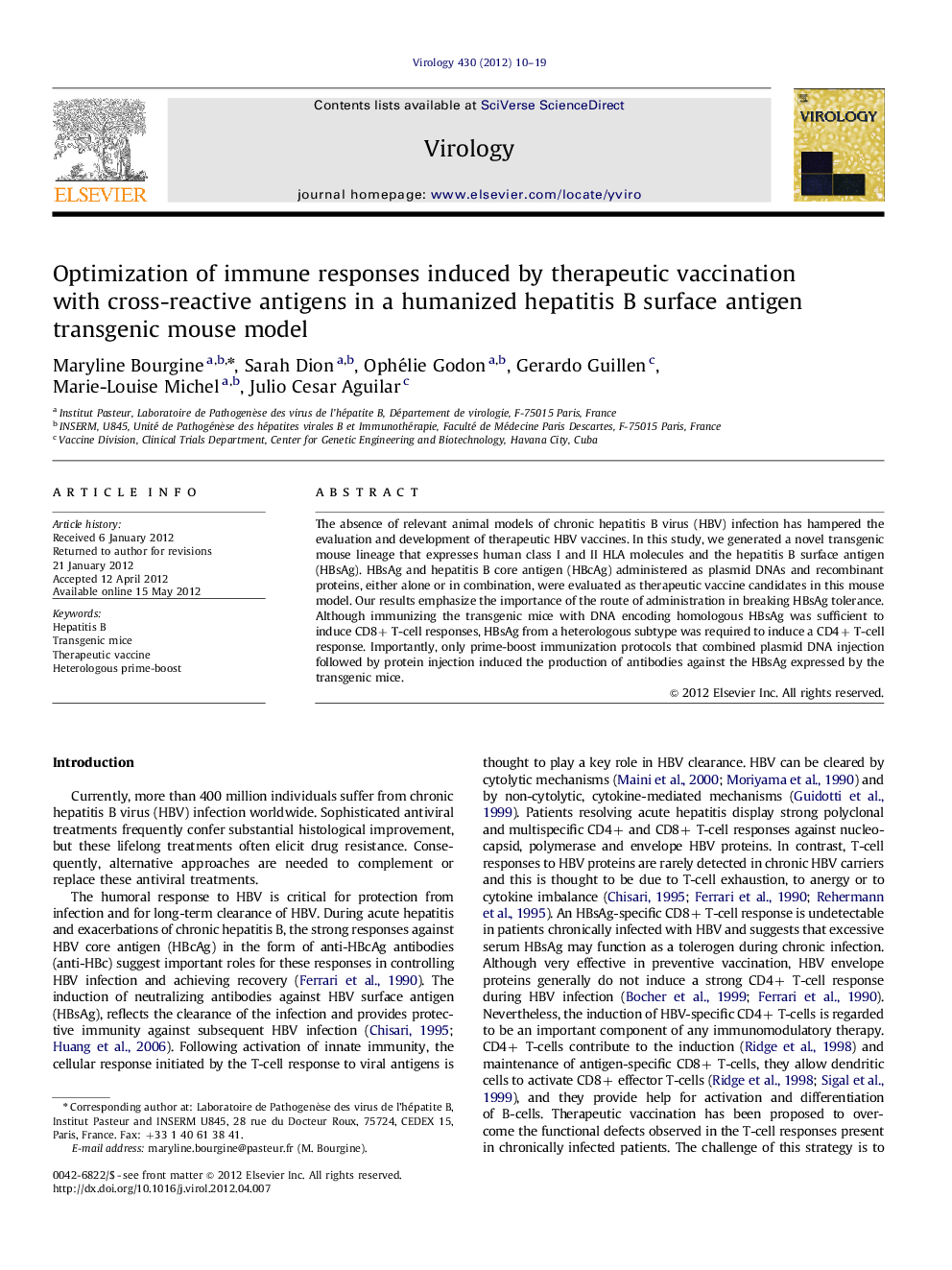| Article ID | Journal | Published Year | Pages | File Type |
|---|---|---|---|---|
| 3424262 | Virology | 2012 | 10 Pages |
The absence of relevant animal models of chronic hepatitis B virus (HBV) infection has hampered the evaluation and development of therapeutic HBV vaccines. In this study, we generated a novel transgenic mouse lineage that expresses human class I and II HLA molecules and the hepatitis B surface antigen (HBsAg). HBsAg and hepatitis B core antigen (HBcAg) administered as plasmid DNAs and recombinant proteins, either alone or in combination, were evaluated as therapeutic vaccine candidates in this mouse model. Our results emphasize the importance of the route of administration in breaking HBsAg tolerance. Although immunizing the transgenic mice with DNA encoding homologous HBsAg was sufficient to induce CD8+ T-cell responses, HBsAg from a heterologous subtype was required to induce a CD4+ T-cell response. Importantly, only prime-boost immunization protocols that combined plasmid DNA injection followed by protein injection induced the production of antibodies against the HBsAg expressed by the transgenic mice.
